A couple of years ago I learned a bit about the Confederate civil war prison camp at Andersonville, GA from an excellent National Geographic TV program called “Aerial America” and decided I had to go there one day. Well, that day turned out to be today as part of my drive from Tallahassee, FL to Columbus, GA.
The prison at Andersonville was an absolute horror. A total of about 45,000 Union troops were imprisoned in the 14 months that it operated and 13,000 of them died there, mainly due to lack of food, exposure and disease. There were no buildings – it was simply an open stockade of pine logs around the perimeter with a simple wooden barrier about 20 feet inside the stockade called the “deadline”. Confederate soldiers in lookouts along the top of the stockade would simply shoot any prisoner who crossed the “deadline”. A small stream running through the camp was dammed by the stockade and provided the only non-drinking water for the prisoners but the dam slowed the flow so that urine and feces did not wash away. The prisoners only had cloths thrown across wooden supports for shelter.
The prison itself is one of three areas of what is now called the Andersonville Prison National Historic Site and Prisoner of War Museum. In addition to the prison there is also Andersonville National Cemetery where the graves of many of the dead are now marked with marble tombstones and a small museum dedicated to educating on such topics as the development of the Geneva Conventions, legal definitions of a prisoner of war over the years and other wartime classifications as well as telling the stories of other American prisoners of war, It is a difficult place to visit but the lessons are valuable and need to be remembered.
On arriving in Columbus I learned about another critical aspect of the civil war that I was unfamiliar with – the navies. When I think of the American Civil War I think of the brutal land battles with such familiar names as Gettysburg or Bull Run but the National Civil War Naval Museum explains the scope and significance of naval battles and blockades as well as the creative technological and tactical advances made at the time. The civil war saw the first use of ironclad ships, rotating gun turrets, submarines and mines and also the first attempts at using what would become torpedoes and aircraft carriers (they carried balloons).
Reproduction of a small section of Andersonville prison stockade and deadline based on original documents and photos.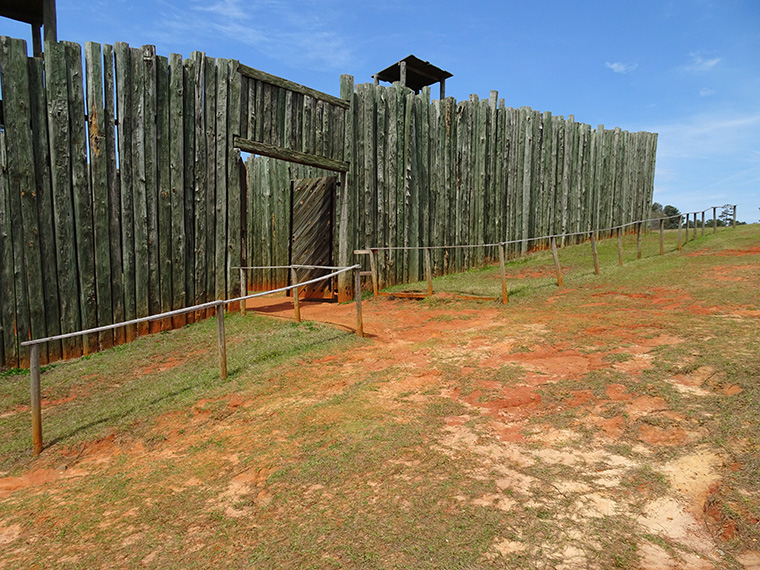
This section shows the stockade, deadline and typical shelters that prisoners used.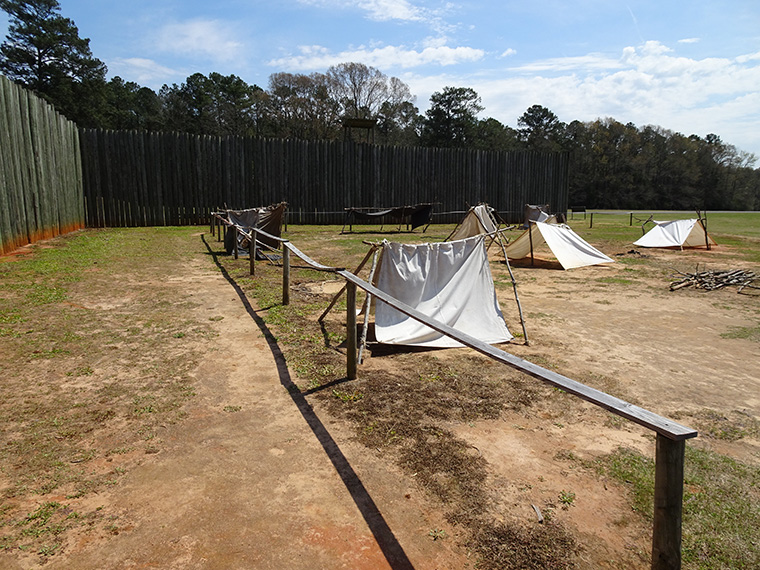
This stream was the only source of water for personal hygiene and bodily function. At the time it was dammed and formed a squalid bog in the middle of the camp.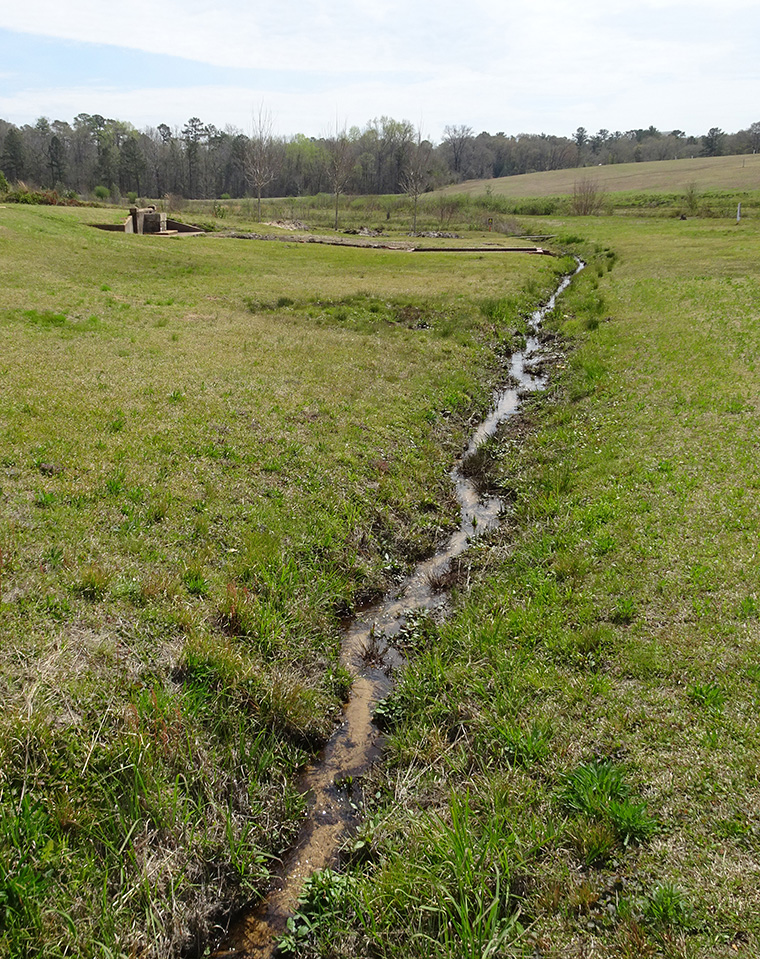
At the cemetery the original wooden markers have been replaced with marble headstones.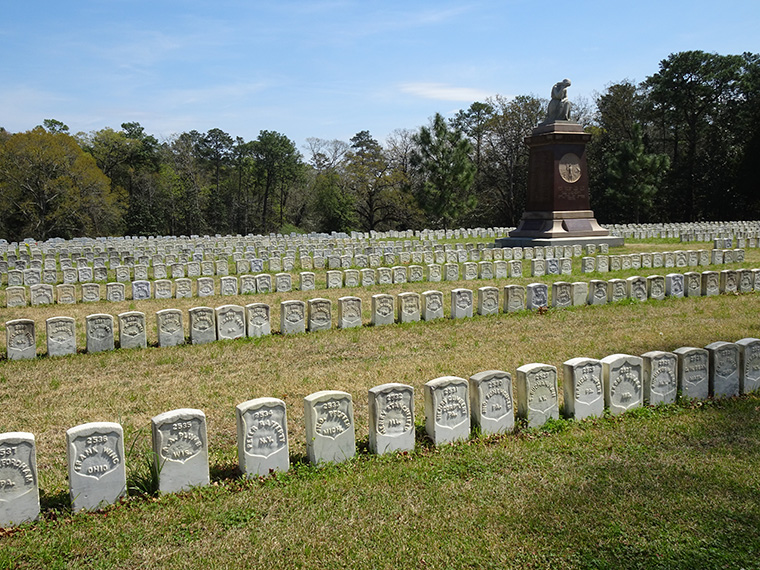
Although difficult to see because of very low lighting this is the bottom of the hull of the CSS Jackson, a 180 foot long ironclad ship built for the confederate navy at the shipyards in Columbus. Many battles were fought for control of rivers, such as the Mississippi and James, and ships needed a flat bottom. The Jackson was destroyed on its first voyage and everything above the waterline burned before it sank in the Chattahoochee river near Columbus. It was recovered in the 1960s and put on display at the National Civil War Naval Museum. The metal frame represents her original shape and size.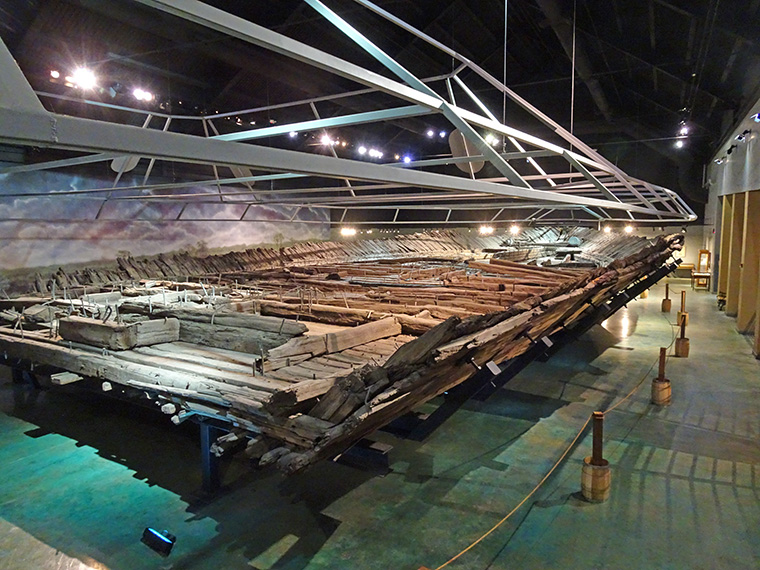
The extent of naval warfare in the civil war surprised me.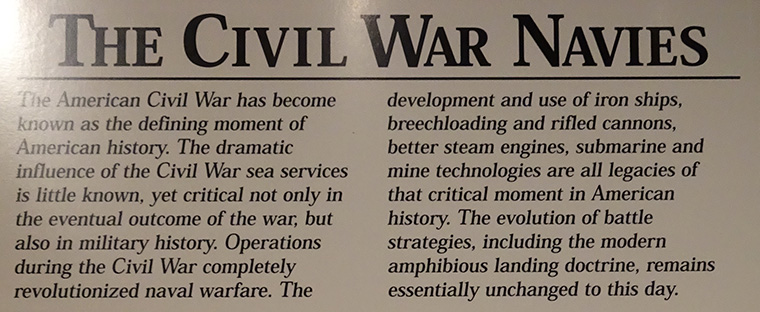

You always find interesting places to visit. Tallahassee State Capitol so different from the majority of Capitols, and the Civil War sites of this blog show other sides to the conflict. A pity the Europeans ignored most of the lessons learned at the time .
Weather looks good .
I like to visit places that are specific to an area or that offer a unique experience. That is why you’ll rarely find me at art, science or natural history museums outside of a marquee city. Hope you are enjoying Uganda at least as much as I’m enjoying my trip.